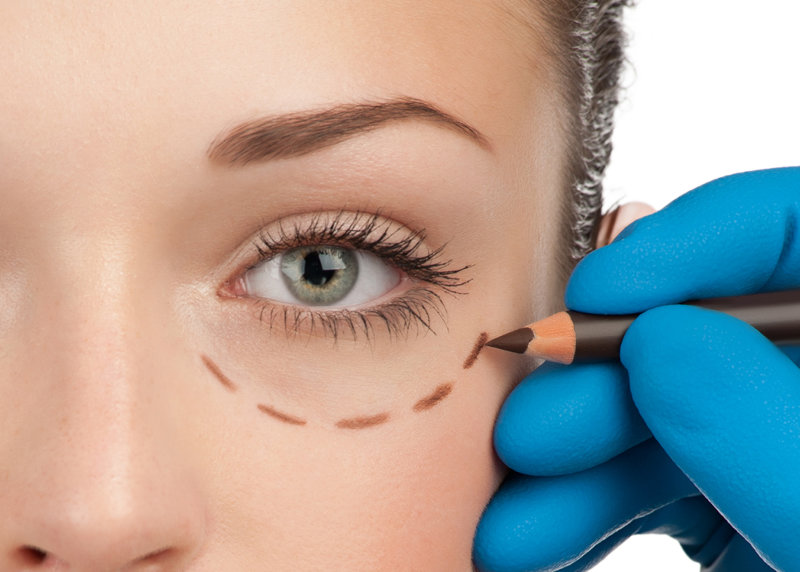Laser Cataract Surgery
In order to restore clear vision, cataracts can be surgically removed using laser technology and then replaced with an artificial lens.

Laser Cataract Surgery
What is Laser Cataract Surgery?
Cataracts occur when the normally transparent lens becomes cloudy. Cataract surgery involves the removal of cloudy lens material from the eye and the insertion of a synthetic intraocular lens. Cataract surgery is the surgical removal of a cataract, or clouded lens. Nothing in this world stays the same for very long.
Cataract removal techniques are continually improving as medical research develops. The transition from intracapsular to extracapsular cataract surgery was witnessed by the seasoned ophthalmologist.
They have seen both the first phacoemulsification machine and the most recent, state-of-the-art phaco machine with cutting-edge fluidics. Patients have benefited from the improved visual outcome, and surgeons have appreciated the reduced difficulty in completing the complex operation, thanks to the progress being made in this area of technology.
The phacoemulsification technique entails the removal of a cataract by the use of a phacoemulsification probe inserted into the eye through small incisions made by the surgeon with the aid of a blade. Cataracts can be removed with the help of ultrasound energy and a skilled surgeon. The success of a traditional phacoemulsification technique relies heavily on the skill, experience, and sheer number of surgeries that have been performed by the surgeon.
In laser assisted cataract surgery, an advanced femtosecond laser replaces or assists use of a hand-held surgical tool for the following steps in cataract surgery:
- The Corneal Incision
- The Anterior Capsulorrhexis
- Cataract Fragmentation
Cataract surgery hazards can be minimised and visual outcomes improved with the help of lasers, which can increase precision, accuracy, and reproducibility at each stage.
Cataract surgery hazards can be minimised and visual outcomes improved with the help of lasers, which can increase precision, accuracy, and reproducibility at each stage.
Corneal Incision: The initial step in cataract surgery is making a self-sealing incision in the cornea using a keratome or a diamond blade. It’s crafted on the cornea’s rim (i.e. limbus).
A detailed 3-D imaging of the eye called an OCT scan is used to produce a precise surgical plane for the corneal incision in laser cataract surgery. The OCT image and a femtosecond laser can be used to precisely construct an incision of a desired location, depth, and length along all planes. The use of a laser to create a corneal incision does not depend on the skill of the surgeon.
Capsulotomy: During conventional cataract surgery, a 26 g needle or capsulorrhexis forceps are used to create a circular, central aperture in the front portion of the capsule (the capsule is the bag that carries the natural lens) (utrata forcep).
Rest of the bag is left behind which supports IOL after removal of cataract. So capsulorrhexis is totally dependent on surgeon’s skills for its centration, size etc.
In laser cataract surgery, the anterior capsulotomy is performed with a femtosecond laser. Studies have shown that capsulotomies performed with a laser have greater accuracy and reproducibility but tensile strength of opening slightly less than that of surgeon made opening.
In summary, though reproducibility and accuracy is more when opening is made with Femtosecond laser; as far as strength of opening is concerned it is no where near to the manually performed capsulorrhexis. Weak opening can create problem in placing IOL in the CAPSULAR BAG.
Cataract Fragmentation: In routine cataract surgery; after capsulorrhexis, surgeon breaks nucleus with help of phacoemulsification probe using ultrasound & mechanical energy. Depending upon grade of cataract, energy used to emulsify cataract in the eye differs. Hard cataract requires more energy so consequently there is more collateral tissue damage as compared to soft cataract.
Experienced surgeon takes all precaution to minimise such tissue damage. In femtosecond laser assisted cataract surgery, on the other hand, laser softens the cataract as it breaks it up. By breaking up the cataract into smaller, softer pieces, less energy is needed to remove the cataract.
So even in laser assisted cataract surgery, phaco probe needs to be inserted inside eye after application of femtolaser on cataract but this time, probe can emulsify pre-cut pieces with less energy as compared to conventional phaco procedure.
The reduced phacoemulsification energy required in laser cataract surgery may also make the procedure safer to the inner eye, which reduces the chance of certain complications, such as PCR (Posterior capsule rent).
These days, surgeon gives some relaxing incision (Limbal Relaxing Incision) over cornea to reduce corneal astigmatism (i.e., intrinsic glass number that patient may need after surgery due to curvature of cornea). During refractive laser-assisted cataract surgery, the OCT image can be used to plan laser LRI or AK incisions in a very precise location, length and depth.
This increases the accuracy of the astigmatism-reducing procedure and increased the probability of good vision without glasses after cataract surgery.
Cost of laser cataract surgery is way higher than the conventional phaco procedure as the cost of femtosecond laser machine & its maintenance is huge. There are few conditions where laser assisted cataract surgery can’t be performed like small pupil and corneal scar etc.
It is important to put this newest technology into proper perspective. Routine phacoemulsification cataract surgery is very effective and successful at the hand of experienced surgeon. People who do not want to invest so much money in laser assisted cataract surgery can still feel confident about the routine phacoemulsification procedure. Experienced surgeon can deliver visual outcome at par with laser assisted cataract surgery at much lower cost.
Laser assisted cataract surgery seems to be appealing but its cost effectiveness is questionable. To sum up, its more accurate incision, capsulotomy and astigmatic correction may help patient to achieve goal of less dependence on glasses after cataract surgery but at a higher price. However, in the hands of an experienced surgeon results with the routine phacoemulsification are even better that too at a fraction of a cost.
